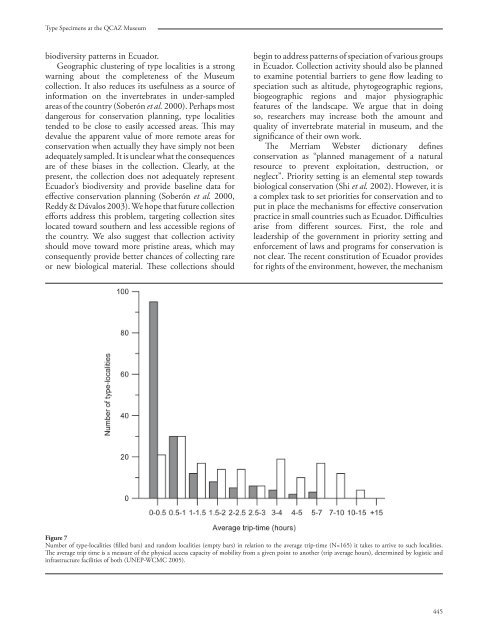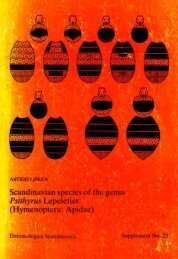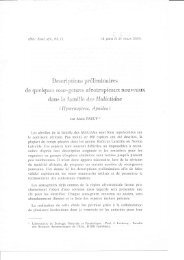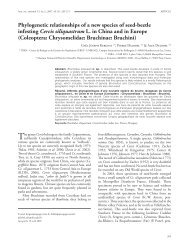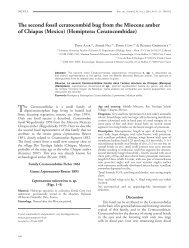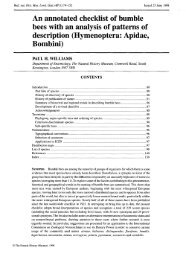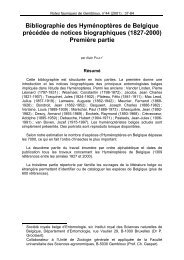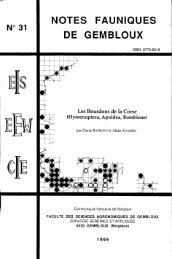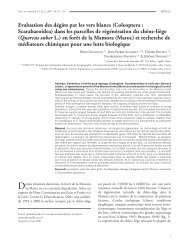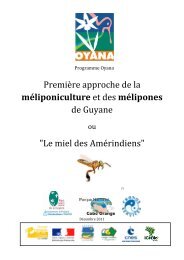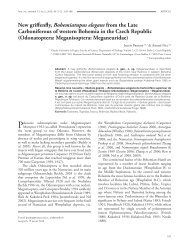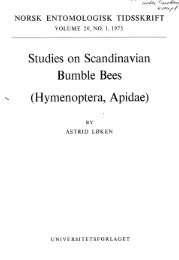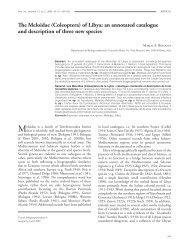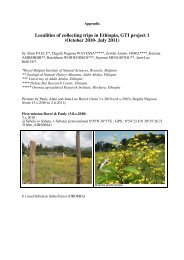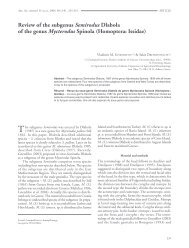ASEF 4-2009.indb - Laboratoire de Zoologie
ASEF 4-2009.indb - Laboratoire de Zoologie
ASEF 4-2009.indb - Laboratoire de Zoologie
Create successful ePaper yourself
Turn your PDF publications into a flip-book with our unique Google optimized e-Paper software.
Type Specimens at the QCAZ Museum<br />
biodiversity patterns in Ecuador.<br />
Geographic clustering of type localities is a strong<br />
warning about the completeness of the Museum<br />
collection. It also reduces its usefulness as a source of<br />
information on the invertebrates in un<strong>de</strong>r-sampled<br />
areas of the country (Soberón et al. 2000). Perhaps most<br />
dangerous for conservation planning, type localities<br />
ten<strong>de</strong>d to be close to easily accessed areas. Th is may<br />
<strong>de</strong>value the apparent value of more remote areas for<br />
conservation when actually they have simply not been<br />
a<strong>de</strong>quately sampled. It is unclear what the consequences<br />
are of these biases in the collection. Clearly, at the<br />
present, the collection does not a<strong>de</strong>quately represent<br />
Ecuador’s biodiversity and provi<strong>de</strong> baseline data for<br />
eff ective conservation planning (Soberón et al. 2000,<br />
Reddy & Dávalos 2003). We hope that future collection<br />
eff orts address this problem, targeting collection sites<br />
located toward southern and less accessible regions of<br />
the country. We also suggest that collection activity<br />
should move toward more pristine areas, which may<br />
consequently provi<strong>de</strong> better chances of collecting rare<br />
or new biological material. Th ese collections should<br />
begin to address patterns of speciation of various groups<br />
in Ecuador. Collection activity should also be planned<br />
to examine potential barriers to gene fl ow leading to<br />
speciation such as altitu<strong>de</strong>, phytogeographic regions,<br />
biogeographic regions and major physiographic<br />
features of the landscape. We argue that in doing<br />
so, researchers may increase both the amount and<br />
quality of invertebrate material in museum, and the<br />
signifi cance of their own work.<br />
Th e Merriam Webster dictionary <strong>de</strong>fi nes<br />
conservation as “planned management of a natural<br />
resource to prevent exploitation, <strong>de</strong>struction, or<br />
neglect”. Priority setting is an elemental step towards<br />
biological conservation (Shi et al. 2002). However, it is<br />
a complex task to set priorities for conservation and to<br />
put in place the mechanisms for eff ective conservation<br />
practice in small countries such as Ecuador. Diffi culties<br />
arise from diff erent sources. First, the role and<br />
lea<strong>de</strong>rship of the government in priority setting and<br />
enforcement of laws and programs for conservation is<br />
not clear. Th e recent constitution of Ecuador provi<strong>de</strong>s<br />
for rights of the environment, however, the mechanism<br />
Figure 7<br />
Number of type-localities (fi lled bars) and random localities (empty bars) in relation to the average trip-time (N=165) it takes to arrive to such localities.<br />
Th e average trip time is a measure of the physical access capacity of mobility from a given point to another (trip average hours), <strong>de</strong>termined by logistic and<br />
infrastructure facilities of both (UNEP-WCMC 2005).<br />
445


